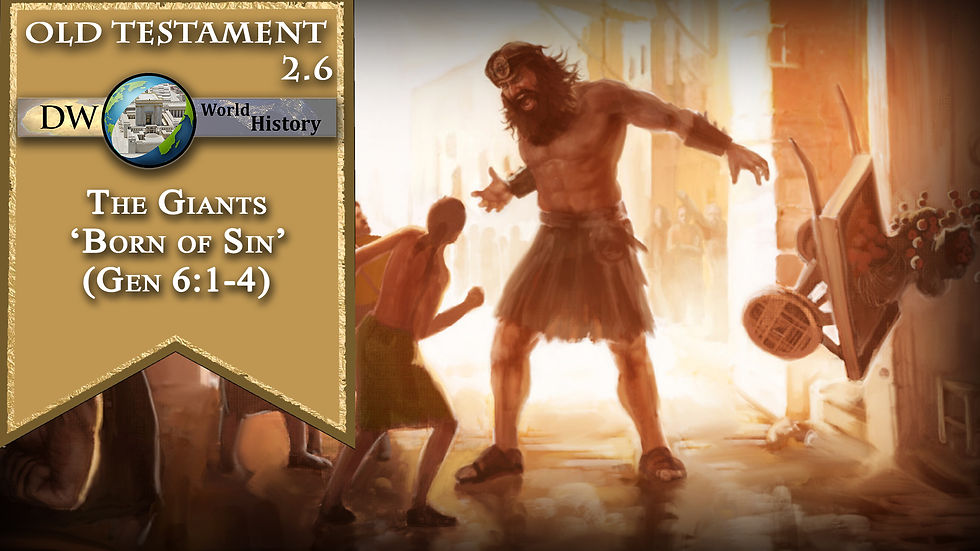The Buildup to the Patriarchs (Gen 10-11)
- dwworldhistory

- Nov 1, 2023
- 2 min read
Updated: Aug 22
DW | Old Testament
2.8 - The Buildup to the Patriarchs (Gen 10-11)
Genesis 10 provides a list of the world's nations which are divided among the three sons of Noah: Shem, Ham, and Japheth. These generally reflect the three major groupings of people in Hebrew World Geography:
Shem includes the Aramaeans, Assyrians, and Arabs, all Semites to the east;
Ham includes the Semitic peoples in the west: the Canaanites and the peoples of north Africa (Egyptians, Libyans, and Sudanese);
Japheth generally includes the non-Semitic peoples of the north and Aegean: the Greeks, Hittites, and people of Cyprus. The Priestly editors created the final form by adding (especially in Genesis 10:1-7) to an older list used by the Yahwist. Their purpose was to show how God's restored blessing after the flood led to even more fertility and success than before the flood.
With Genesis 11, the J ended his account of the beginning of the world with the story of the Tower of Babel (Gen 11:1-9); noting that sin did not disappear with the flood. The human race still prided itself on its own glory and rebelled against God. This act was apparent in its creation of the Tower of Babel. The Babylonians regularly raised these huge ziggurats to their gods. J delighted in showing God's punishment for such human pride. The nations are so scattered and so closed off by scrambled language, that they will never even cooperate with one another, much less challenge God.
Genesis 11 closes with the genealogy of Abraham. The genealogy list of the Priestly author from Chapter 5 is continued. It bridges the final distance between mythical time to historical time by listing the generations from Noah down to the first patriarch, Abraham. Theologically, P makes the point that God had to give up on humanity as a whole after the Tower of Babel and instead narrow his choice to one man and one nation who would learn obedience and devotion to God and eventually bring this knowledge and divine blessing to all other people.

Thus with Abraham, the Bible begins to deal with people and places actually known to exist. Interestingly, archaeology has revealed that many of the names listed in Genesis 11:27-32 as Abraham's close relatives were actually the names of towns near Haran in Mesopotamia. It is a symbolic way of expressing Abraham's roots in that area.
With this new beginning, we leave the stage of myth and prologue and enter the historical world of Biblical Israel!
See the full episode:
Support this project at Patreon and gain access to the complete video series! You can also find maps, podcasts, episode outlines, and more!
👉 Patreon - https://www.patreon.com/DWWorldHistory
See our other channels at:
Our Podcast series is available on all major platforms:
👉 Podcast: http://dwworldhistory.buzzsprout.com
Follow DW World History on X, Instagram & Facebook for updates and regular history posts.
👉 Facebook - https://www.facebook.com/DWWorldHistory
👉 Instagram - https://www.instagram.com/dwworldhistory











Comments